Description
McCartney II is perhaps Paul’s most underrated solo album. While coming to Japan in January 1980, all of his performances in Japan were canceled due to marijuana possession. After that, Wings is said to have naturally disappeared. However, the disbandment was not declared on this day, and it literally disappeared naturally. Therefore, even after returning from Japan, there were remnants of Wings, and recording sessions were still being held with the final lineup. After returning from Japan, Paul probably took a break from his activities. During that time, I was recording new songs just for myself, recording at home as a hobby. When he was listening to it on his car stereo, his passenger liked it and suggested to Paul that they should release it. This became the basis for the album that would later be released as McCartney II. “McCartney II” was originally scheduled to be released as Wings’ new album, so as you can see in the jacket photo, all members took the same photo at the same time, and the band also recorded it. That is the session that took place from May to June 1980, which is recorded in the first half of Disc 1 of this work. As you can see from the list of songs, perhaps because they didn’t have a lot of songs in stock, in addition to new songs, they have tried again the songs from “COLD CUTS”, which had failed since the 1970s. However, the aftermath of the cancellation of the Japan tour due to Paul’s carelessness was large, causing dissonance among the band members. Denny Lane, in particular, was very angry about Paul’s mistake and said he wanted to go on tour, and then left the band. Denny Lane has been by Paul’s side since Wings was formed, and has served Paul as his faithful “Friday” even though the members have changed frequently. With Denny Lane leaving the band out of affection, Paul seems to have given up on continuing Wings. In the end, as history shows, “McCartney II” will be released as Paul’s solo album. It is not clear what the original song selections were, but when you listen to this album, you will notice that just like McCartney released in 1970, Paul was in charge of all the instruments. There are many songs that make you feel like you’re listening to Paul’s home recordings. The songs that were originally supposed to be performed by the band were probably released as an extension of Paul’s home recordings. While “McCartney” gave the impression of being unfinished, “McCartney II” gives the impression of a techno-like sound that relied on equipment as the equipment progressed. This was a trend at the time, and to today’s ears it feels a bit old-fashioned, but the beauty of the song is unique to Paul, and I think it deserves to be reevaluated in the future. The first half of Disc 1 contains the last session of Wings. First of all, the highlight is, of course, the unreleased song “Cruising Ahead”, which appears for the first time this time. Since Paul’s voice in the studio “OK Here we go” is included at the beginning, it clearly feels like a session sound source in the studio. Is it Denny that has a slight chorus? The oldies-style guitar plays in as a hint, and the song has a late 80’s feel to it, as if it could be an outtake from the cover album “Back In The USSR.” I can’t help but be surprised that Wings’ outtakes like this, and moreover, unreleased songs that were unknown until now, were leaked. The following song, “Weep For Love,” is the last song on Denny’s solo album “Japanese Tears,” and is backed by Wings. What is included here is the initial version of the song, which is the first appearance. Denny’s solo album was not very well-received, being compared to baseball and being described as “the play of a good minor league player,” but you can feel the Wings flavor here and there, and Paul Fan was something to enjoy. The melody of this song is Moro, that of Wings, and nothing else. After this, it includes session sound sources for two songs, “Rubber’s Ball” and “New Orleans”, which are scheduled to be included in “COLD CUTS”, which were tried many times but failed. Tracks 4 and 5 of “Rubber’s Ball” are separate mixes that appear for the first time in this work. The Original Rough Track is a mix that starts with the members’ tweets and features vocals throughout. It’s interesting to see Paul sing in a deliberately pretentious voice. It seems like some kind of effect has been applied to the voices of the other members as well. In addition to the vocal parts, there are also sounds of “woo~” and laughter, which convey the fun atmosphere of the studio. Three versions of “New Orleans” are included from this session. Among them, track 8 is the sound source that will appear for the first time. This is an overdub of the 1975 recording. The main vocalist is Linda, and the song was originally recorded during the “Venus And Mars” session. In addition to Paul and Denny, Joe English plays the drums. Based on that, overdubs were made in this session. From the second half of Disc 1, Disc 2 contains the session sound source of the song that was held in June 1979 and was later released as “McCartney II”. There are many rough mixes and different takes. The instrumentation is simple, so it may be hard to tell the difference at first listen, but it’s clearly a different take, so don’t underestimate it. Already a different take from the opening song “Coming Up”. Paul’s vocals are completely different, and it seems that the break part in the middle of the song has not been decided yet, and you can see that he is ad-libbing over the endless riff. Especially in the second half and towards the ending, there is no set way to end the song, and it is very interesting to see Paul singing ad-lib and repeating the first lyrics again. As mentioned above, the vocals are completely different, but there are some phrases that are familiar to me, so I’ll probably record multiple takes, including this one, and connect the best parts to create the release version. I think he made it. “Summer’s Day Song” had a song on it in the release version, but what is included here is an instrumental version. It’s a beautiful and fresh song, reminiscent of the Beatles’ “Because.” The following song, “Frozen Japanese”, has a controversial title, but unfortunately it was originally an instrumental number, but this is where a hypothesis is born. It is believed that the orchestra for the two songs “Summer’s Day Song” and “Frozen Japanese” was originally completed first, and the lyrics were added later. Paul says that “Frozen Japanese” was “a song inspired by picture postcards of Japan’s beautiful winter scenery,” adding, “If they really wanted to insult Japanese people, they could have added harsh lyrics. That was their intention.” There is no such thing at all.” And contrary to the title, “Summer’s Day Song” is the appropriate tune for the “beautiful winter scenery of Japan” that Paul says. In fact, “Frozen Japanese” has an oriental feel, but with a light tempo, it’s the complete opposite of what you might think. Perhaps these two songs were composed as a set, and the title was added later. And the fact that “Frozen Japanese” is called “Frozen Jap” outside of Japan clearly suggests that it was recognized as an insult. Of course, to be honest, when I was young, I was a bit concerned about cannabis. However, openly ridiculing them is discouraged. Therefore, I think they took a bit of “revenge” with the title, and used the inspiration from “Summer’s Day Song” as an excuse, saying “I was inspired by Japan’s beautiful winter scenery.” “Summer’s Day Song” and “Frozen Japanese” were created as a set, and this instrumental version lends truth to the above assumption. Otherwise, I can’t explain why this song’s outtake is an instrumental, even though the other songs have vocals. The second half of Disc 2 contains unreleased songs from the same period that were leaked from the release of “McCartney II”. All of the songs are techno-style songs that wouldn’t feel out of place on an album, but “Mr H. Atom”, in which Linda takes the vocals, is particularly eye-catching. 1970’s “McCartney,” which had three themes as home, family, and love, could be said to have been co-written with Linda, and above all, the first single “Another Day” was released with joint credit with Linda. It was done. Similarly, they may have considered including Linda’s vocals on “McCartney II.” Just like John’s album had Yoko’s songs on it. Although the song was ultimately shelved, it is interesting that Linda’s song remains as an outtake, and as an enthusiast, it stirs the imagination. Contains Wings’ last recording sessions, mainly the sessions for the album “McCartney II”. It has a rich content, including first-time sound sources, and above all, unreleased songs that are first-time appearances, and is a content that I would like to have together with Studio Rarities Vol.1. DISC ONE Lympne Castle with RAK Mobile Studios, London May 24 and June 22, 1979 01. Cruising Ahead unreleased song 02. Weep For Love (Early Take) 03. Weep For Love (Final Take) 04. Robber’s Ball (Original rough track) 05. Robber’s Ball (First mix) 06. Robber’s Ball (Second mix with additional overdubs) 07. Robber’s Ball (Third Mix with reverb and extra effects and vocals) 08. New Orleans (recorded:1975/Overdub #1:1979) 09 New Orleans (Overdub #2:1979) 10. New Orleans (1998 mix) “McCartney II” June 1979, Rough Mixes and alternates 11. Coming Up 12. Temporary Secretary 13. On The Way 14. Waterfalls (stereo promo edit) 15. Waterfalls (video version w/unreleased intro) 16. Nobody Knows 17. Front Parlour DISC TWO 01. Summer’s Day Song (instrumental) 02. Frozen Jap 03. Boogey Music 04. Darkroom 05. One Of These Days 06. Check My Machine 07. Secret Friend 08. Wonderful Christmastime (unedited long version) 09. All Your Horseriders 10. Blue Sway 11. Mr H. Atom 12. You Know I’ll Get You Baby 13. Bogey Wobble 14. Coming Up (live at Glasgow, unedited & unmixed version)
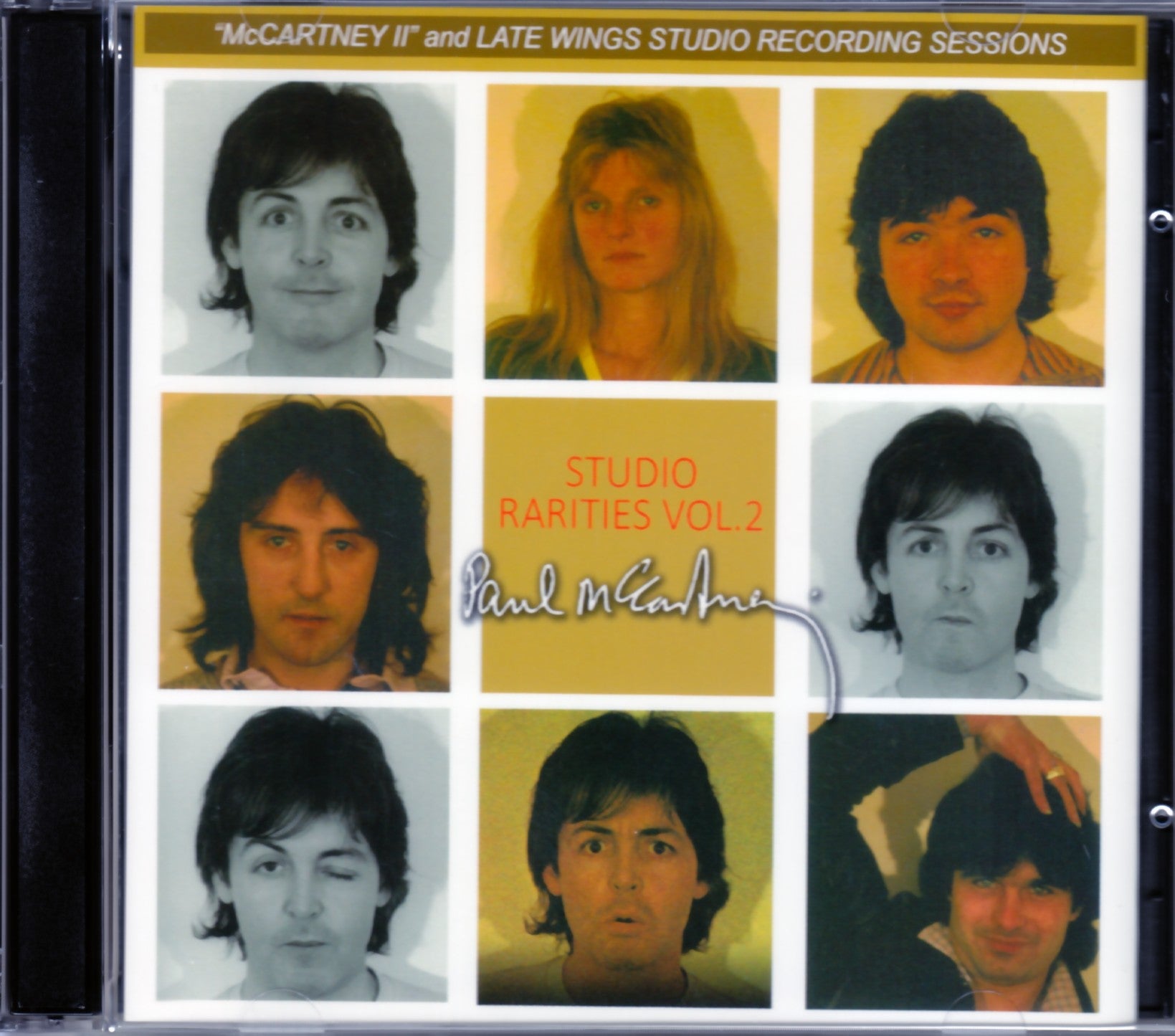
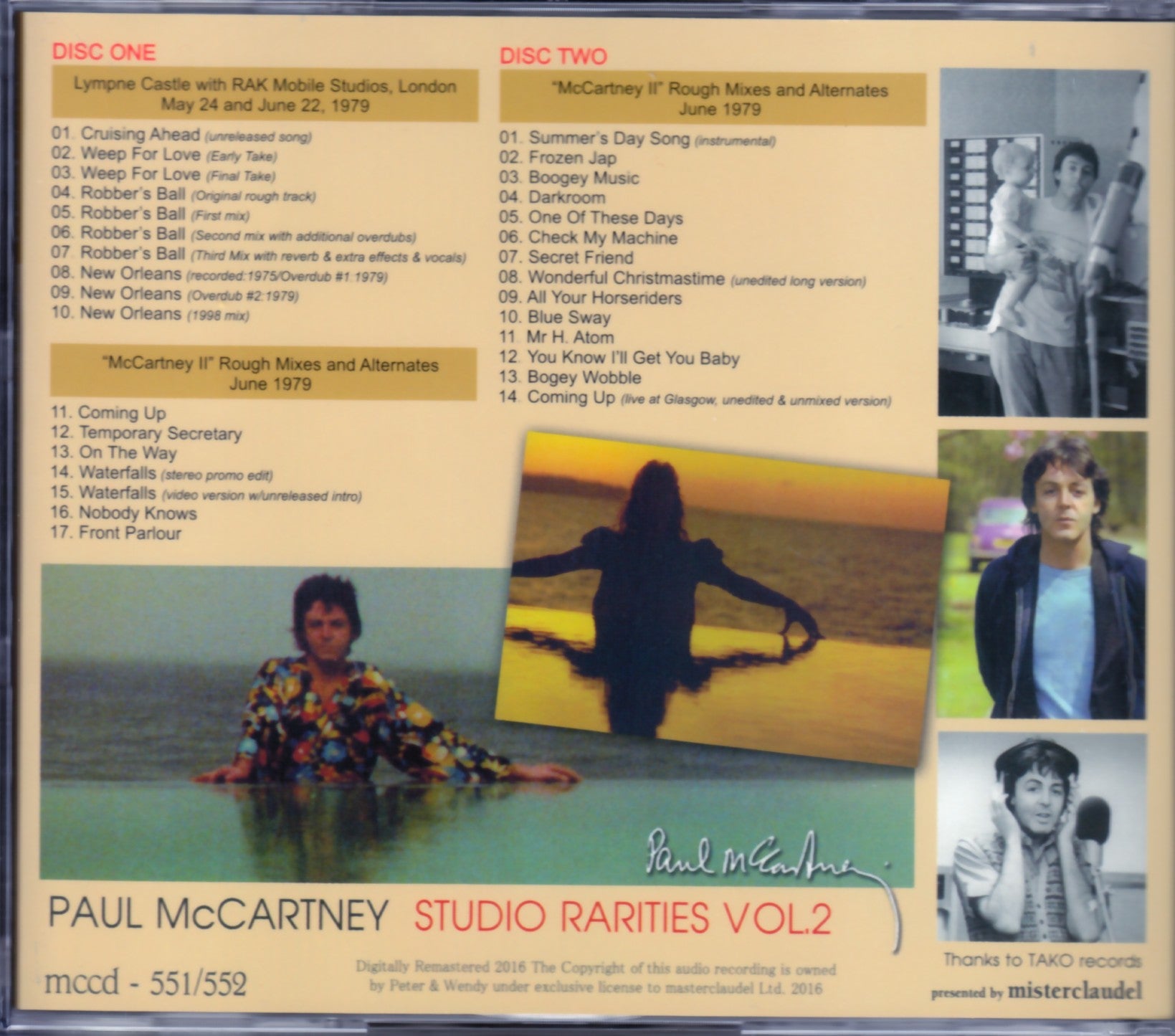


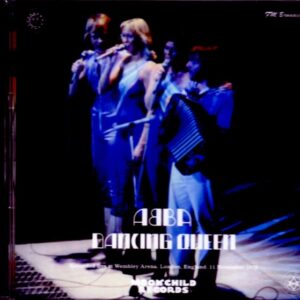
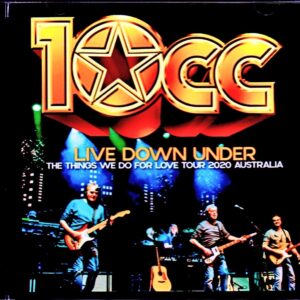
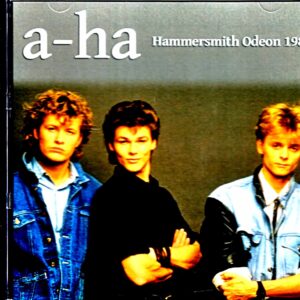
Reviews
There are no reviews yet.